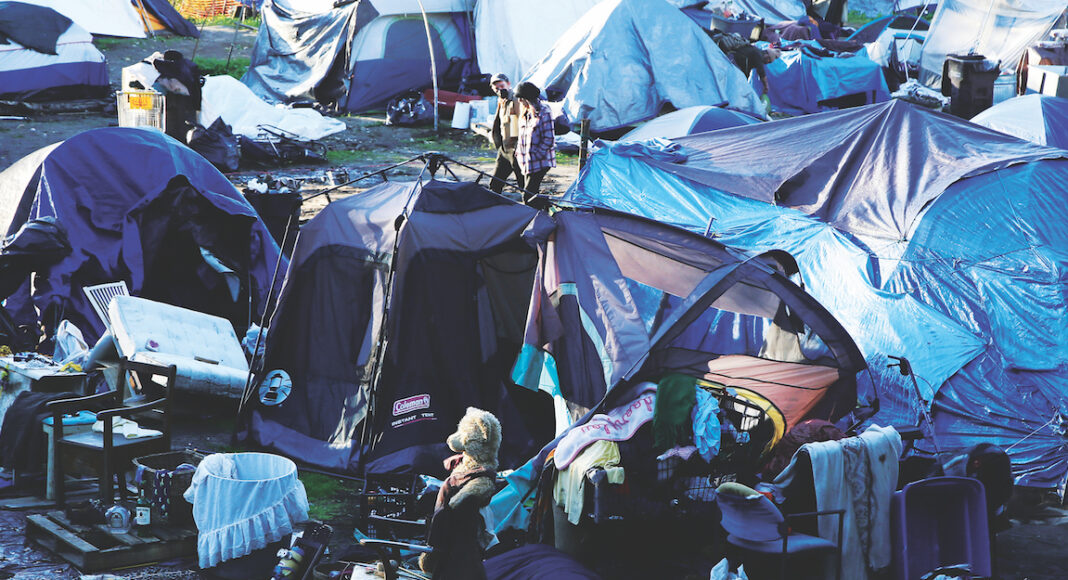It’s been a little over two weeks since the San Lorenzo River flooded on Dec. 13, forcing people in the Benchlands encampments alongside the banks of the river to move or risk the threat of the rising water.
The flooding received international coverage, landing in The Guardian and sparking intense debate on social media, with some criticizing the city for not taking more precautions ahead of the storm. Elizabeth Smith, the spokesperson for the city of Santa Cruz, says the city alerted people who call the Benchlands home about the storm. But with no room at local shelters, many of the people who agreed to relocate didn’t have a dry place to go, and some people opted to stay with their belongings.
Now, as Coastal Watershed Council Executive Director Greg Pepping looks out his office window that has a clear view of the Benchlands, he says the encampments are cleaner and less populated than they were before the storm—but that’s not saying much.
“I would say that it’s still in a really rough state, and it’s also better than it was,” says Pepping. “There’s trash, and a lot of people’s belongings just left behind.”
Pepping has for more than 12 years worked to protect and transform the San Lorenzo River. When he last spoke to GT, he wondered if the trash that was swept into the river might make the city vulnerable to a lawsuit.
But Thea Tryon, assistant executive officer at the Central Coast Water Board, says a lawsuit is unlikely. Homelessness is a difficult issue, and agencies will try to work with cities to clean up trash and pollutants after an event like this, she writes to GT in an email.
At a press briefing about the flooding, Santa Cruz’s Director of Parks and Recreation Tony Elliot said the work the city does ahead of storms is largely preventative. The focus is to make sure riparian areas and that the levee are free of trash.
Still, Pepping says, there’s a responsibility for the city to ensure that the rivers and ocean stay clear of trash.
“It’s not just about some tree huggers advocating for a water body. There are laws in place and they’re not being followed,” says Pepping.














Spot on, Greg. Environmental protection laws matter. There has never been, nor will there ever be, an appropriate time to allow pollution of waterways.